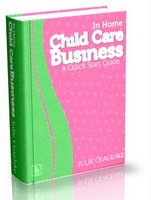Roseola--Earache--Pink Eye,- What are they???
Roseola is a mild infection, in which a
High Fever
occurs, that is followed by a rash. I have cared for children who have had this, including my own son when he was a small infant. He had an extremely high temperature 105 degrees for 3 days, then a rash all over him.
The high fever was terrifying! Then when the rash occurs you are left wondering what is wrong with your child, especially if you’ve never heard of it like we hadn’t. We of course rushed him to the emergency room in a panic!
The experts say that it typically isn’t serious and that rarely are there complications from the high fever. They also state that children ages 6 months to 1 year most commonly get it, but occasionally it does affect adults, too.

Since roseola is a very common infection, most kids will have had roseola by the time they go to kindergarten.
What Causes It???
Two common strains of herpes viruses, human herpes-virus 6 (HHV-6), cause roseola. Some children develop only a very mild case of it and never show any clear indication of illness, while others experience the full range of symptoms, like my son did.
Symptoms:
- Runny nose, sore throat (hard to tell in an infant), and eye redness.
- High fever that comes on quickly. This usually occurs before the rash will. It can last for 3 (sometimes up to 7) days. The fever may be as high as 105° Fahrenheit. Between the second and fourth day the fever will drop and a rash appears –usually as the fever falls.
- The rash will start on the child’s trunk then will spreads to their face, neck and limbs. The rash is pink or rose-colored, and has slightly raised small sores.
- The rash usually will last from a few hours to 2 - 3 days. It typically does not itch.
If convulsions occur call 911 and then the parents/guardians.
When a Child Has an Earache
It seems as though nothing is more painful for an infant, toddler, older child, or adult than an earache!
It is one of those illnesses that I have experienced in my daycare home more times than I can count, and a Child Illness that you are just not sure with infants if it’s ears hurting or something else!
Here are symptoms of an earache
or possibly ear infection in an infant- they do not have to have all of them:
- The baby will tug, pull or bat at their ears. (Sometimes they do this when they “discover” them- and if they have no other symptoms they are more than likely fine). They may also shake their heads.
- Fever… but be aware, they do not always have a fever with an earache or ear infection.
- Diarrhea or vomiting… caused from the germ that gave them the ear infection.
- Fussiness, crying, screaming especially when you lay them down at night and difficulty sleeping.
- No appetite, or won’t eat as much as they normally would. It can hurt when they swallow!
- Cold symptoms –Usually infants will have cold symptom prior to earaches or ear infection. When a clear runny nose turns yellow or greenish, an ear infection may have set in.
- Drainage or discharge from the ear – if you see a thick pus or blood coming out of the ear, call the parents/guardians immediately as this may indicate a perforated eardrum.
Urge parents/guardians to take their child to the doctor at the first sign of a possible earache or ear infection. They may require an antibiotic to clear it up.

PINK EYE OR CONJUNCTIVITIS
When a child has pink eye, the most noticeable symptom is a pink or a grayish-red color to one or both eyes. There could be inflammation around the eyeball and eyelids, causing the eye appear large or bloated.
I have had kids with it who would scratch their eyes continuously- when a child has pink eye the itchiness doesn't go away. I’ve also had them wake up from nap-time to eyes that are sealed shut with crusty pus and goo. If this happens at your daycare, call the parents immediately to have the child seen by a doctor as to not spread this very contagious infection.
Oh! Be sure to wash your hands thoroughly!!!
Visual issues are also common with pink eye. A child’s vision may be blurry or they may have double vision, making them to appear clumsier than normal.
Here are more symptoms of pink eye:
- Red blood vessels or lines around the eye or on the eyelid that is more visible.
- There could be small or larger bumps on the under or upper part of the eyelid.
- The eyes will tear excessively, and become irritated.
Pink eye is most common in children but it can affect people of all ages. There are several types of pink eye with different symptoms. Here are a just a couple of types:
Viral
The primary cause of pink eye is a virus infection. Symptoms of the viral type include; watery eye discharge, swollen eyelids and cold-like symptoms. Viral pink eye can also cause pain if you look at bright lights.
Bacterial
There are two common bacterial causes of pink eye- Staphylococci and Streptococci. The symptoms of bacterial pink eye include; redness, swelling, eye pain and the gooey eye discharge that is yellow or green in color.
Viral and bacterial conjunctivitis (pink eye) are extremely contagious just through basic contact, even more-so than Roseola. If a child has one of these types of pink eye, a doctor must clear the child to come back to your daycare to prevent the spread of it. I recommend washing all bedding, sanitizing all toys and areas the contagious child came in contact with. Also practicing proper hand washing is beneficial as well.
Go to the top of Roseola
Return from Roseola to Child Care Business HOME - child care jobs







